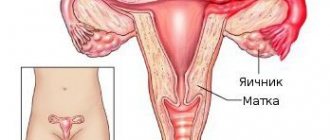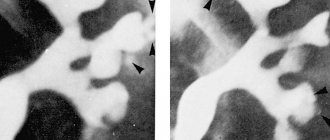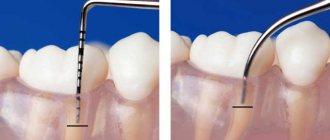The human ear is one of the most popular locations of diseases in the human body. People often encounter all sorts of ear diseases, including otitis media. The majority of people (about 60%) experience various forms of otitis in infancy, while the rate of patients who have experienced this disease at least once in adulthood exceeds the 70% mark.
Modern medicine has well studied the nature of otitis, thanks to which the disease has been classified into forms and types. In particular, otorhinolaryngologists studied one of the most popular forms of the disease - serous otitis of the ear, which has its own characteristics in comparison with the more common purulent form.
Symptoms and causes of the disease
The serous type of otitis develops in the middle ear cavity. In the usual acute form of inflammation, a sharp change in organ tissue, inflammation and swelling is observed. Bacteria and exudate are detected in the affected organ, which serves as an ideal breeding ground for them.
Serous acute otitis differs from other forms in that it is not expressed by severe symptoms. The accumulation of secretions occurs in a hidden form, and therefore, at first, the patient may not even suspect the presence of a problem until it moves to the next stage.
Any discomfort in the ear can be a cause for concern. Examination reveals yellowish discharge accumulated behind the eardrum. The membrane itself also becomes inflamed and retracts inward. There is a feeling of splashing and gurgling.
Several factors can provoke serous otitis in the middle ear cavity. First of all, you need to take into account the Eustachian tube. This is especially true for young children, since this organ is less developed in them, which provokes frequent ear inflammations. The main aspect is the violation of the drainage and ventilation functions of this element. The lack of oxygen and normal outflow of exudate creates the prerequisites for the proliferation of pathogenic microflora.
The direct source of inflammation can be:
- Viruses . The most common are adenoviruses, enteroviruses, rhinoviruses, coronaviruses, influenza and parainfluenza, as well as various respiratory syncytial viruses. They are the main reason for the development of such complications in children.
- Infections. Colds that cause inflammation of the tissues of the organs of the ear-nose-throat system and various respiratory diseases provoke otitis media of various forms.
- Bacteria . If the prerequisites arise for bacteria to penetrate into the middle ear cavity and an environment favorable for them is created, there is practically no chance of avoiding the disease. The main pathogens are streptococci, Haemophilus influenzae and pneumococci.
There may be a combination of several reasons at once, which complicates the treatment process. Primary diseases of the nasopharynx and other ear pathologies can also cause acute otitis media.
Causes of the disease
Doctors identify several factors that provoke inflammation of the middle ear:
- allergies of various etiologies;
- infection in the nasopharynx;
- neoplasms;
- adenoid hypertrophy;
- obstructive changes in the auditory canal;
- atopic dermatitis;
- deficiency of secretory IgA;
- increase in secretory formations.
- LiveJournal
- Blogger
The cause of serous otitis is pathogenic microorganisms
Studies have shown that in 80% of patients, recovery occurs after eliminating the allergen. In children under 2 years of age, this may be a food allergy to milk. Frequent colds, especially a prolonged runny nose, provoke the development of otitis media.
Stages of development and forms
The acute form of serous otitis media does not occur spontaneously. It is preceded by other forms of diseases and painful conditions. The entire cycle can be divided into 4 stages. The more advanced the situation, the more prerequisites arise for the development of complications and hearing impairment.
- Stage 1 . During the catarrhal stage, there is a disruption of the auditory tube - eustachitis. There is a change in color and inflammation of the mucous membranes. Since the outflow of fluid is disrupted and access to air is blocked, the eardrum is retracted due to the formation of a vacuum in the cavity of the middle ear. The person begins to hear his own voice, but no significant changes in hearing acuity are observed.
- Stage 2 . After a few weeks, the secretory stage begins. Fluid and mucus accumulate behind the eardrum and are often visible through the membrane. Discomfort in the ear increases, the patient feels pressure and hears splashing. Sometimes hearing deteriorates if exudate fills the labyrinthine window. In some cases, acute otitis media at this stage enters a protracted stage and lasts for about a year.
- Stage 3 . The mucous period is characterized by thickening of the contents of the ear. The patient stops hearing splashing, but the pressure on the membrane increases and hearing worsens. When there is no room left for the exudate, perforation of the membrane may occur. Some of the thick mucus leaks out, resulting in the formation of sticky discharge. The membrane itself thickens. The duration of this stage can reach two years.
- Stage 4 . In the absence of treatment, the fibrous stage begins, when the discharge gradually disappears, but at the same time degenerative processes develop in the tissues of the ear. The membrane and auditory ossicles are also affected. The growth of soft tissues leads to a decrease in their mobility and further hearing loss.
Treatment of the disease must begin early, especially in children. In this case, it is possible to avoid complications and the transformation of the acute phase into a chronic one.
Diagnostics
Before treating acute otitis media, it is worth conducting diagnostic studies. Most often, otoscopy is used for this purpose. Audiometry and otomicroscopy can also be performed. In some situations, radiography and computed tomography are required. If the disease is infectious in nature, it will not be possible to do without laboratory tests.
Diagnosis of pathology in young children has certain features. Increased anxiety, irritability, loss of appetite, and crying when there is pressure on the tragus can help suspect acute otitis media on the right or left. An alarming symptom is the child’s tendency to take a certain position during sleep.
Diagnosis and treatment of the disease using various methods
It can be difficult to directly identify serous otitis itself. This is due, first of all, to the absence of pronounced symptoms in the first weeks of its development. The detection of any type of Eustachian tube dysfunction should alert you.
To determine the diagnosis, it is necessary to perform an initial examination of the patient. To obtain a complete picture, otoscopy is used, which allows one to examine the condition of the eardrum and identify the presence of an accumulation of exudate. In parallel, the method of blowing the Eustachian tube can be used.
To detect characteristic processes, tympanometry is performed. Readings should also be taken using audiometry and tuning forks to detect hearing abnormalities. In the final stages, middle ear disease can be detected by a characteristic symptom – “sticky ear”. However, delayed diagnosis and treatment often leads to irreversible processes, which is especially dangerous for children due to the imperfections of their body.
To maximize the chances of full recovery of middle ear function, it is necessary to begin treatment appropriate to the detected stage as early as possible. At first, it is enough to strengthen the immune system and eliminate the source of inflammation. You also need to relieve swelling of the nearby tissues of the nasopharynx. It is important to ensure restoration of the air drainage function of the Eustachian tube. A combination of medications, blowing and massage of the membrane speeds up recovery.
Acute otitis media of this type is characterized by an accumulation of discharge. To stimulate their removal, mechanical removal methods, including shunting and aspiration, can be used. Additionally, electrophoresis and other types of physiotherapy are performed.
Treatment of advanced stages is complicated by the development of destructive processes. In this case, surgery may be necessary to remove the affected tissue and restore the organ. It is important to achieve maximum restoration of the sound-conducting system and prevent the outflow of serous contents into the inner ear.
Treatment of inflammatory diseases of the middle ear can be done using folk remedies. Such recipes do not replace full-fledged therapy, but they are quite suitable for eliminating some symptoms without the use of synthetic drugs.
Treatment of serous otitis in adults and children with folk remedies is carried out using the following recipes:
- onions with cumin - bake in the oven, apply to the sore ear;
- bay leaf decoction - bury five drops in the ear three times a day;
- garlic oil – instilled to eliminate infection;
- plantain juice - turundas are placed in the ear canal to prevent the development of ulcers.
You can also use compresses from a decoction of chamomile, St. John's wort, calendula, yarrow, and elderberry. They help eliminate infection and prevent the proliferation of harmful microorganisms. When taken orally, decoctions and teas from these plants strengthen the immune system, relieve inflammation and swelling, and partially relieve pain.
Serous otitis media: acute and chronic
All iLive content is reviewed by medical experts to ensure it is as accurate and factual as possible.
We have strict sourcing guidelines and only link to reputable sites, academic research institutions and, where possible, proven medical studies. Please note that the numbers in parentheses ([1], [2], etc.) are clickable links to such studies.
If you believe that any of our content is inaccurate, out of date, or otherwise questionable, please select it and press Ctrl + Enter.
Serous (exudative) otitis is an inflammation of the ear, which is manifested by the accumulation of serous fluid in the ear cavity.
[1], [2], [3], [4]
Features of the course of the disease in children
The occurrence of serous otitis in children occurs more often than in adults, but treatment should be gentle so as not to harm the body as a whole. The tendency to this kind of middle ear disease is due to the characteristics of the child’s body.
First of all, it is worth noting the imperfection of the immune system. Its formation is influenced by many factors: the presence of congenital problems, medications used, lifestyle and nutrition.
It is advisable for infants to be breastfed, since mother's milk contains important elements that contribute to the proper development of immunity. Artificial mixtures, even with a fortified composition, cannot replace them. Over time, you need to introduce fruits and vegetables into your diet.
Also, low resistance to infections in children can be caused by frequent or even uncontrolled use of antibiotics. Such treatment can eliminate the problem, but does not contribute to the development of the body’s natural defenses. Due to the constant use of such drugs, their effectiveness decreases.
Another cause of otitis in children can be the proliferation of adenoids. To prevent inflammation, an adenotomy can be performed.
Symptoms of serous otitis
The symptoms of exudative otitis differ and depend on the predominance of the stage, of which there are four:
- eustachitis (catarrhal stage);
- secretory stage;
- mucosal stage;
- fibrous stage.
Eustachitis is an inflammation of the Eustachian tube, which interferes with the flow of air into the middle ear. An empty space forms in the tympanic cavity, and transudate appears. Due to the development of otitis media, lymphocytes move to the source of inflammation, and irritation of the mucous glands begins, which produce secretions. The patient has partial hearing loss and congestion.
The second stage of serous otitis differs from the first by the presence of serous fluid in the tympanic cavity. Characteristic is the development of metaplasia - the replacement of one type of epithelium with another, which is not normally found in the ear cavity. The number of secretory glands increases. The person may feel fullness and pressure in the ear. There is a feeling as if the liquid inside is overflowing and at this moment hearing improves. This happens when the head position changes.
In the mucosal stage, the serous fluid, which filled the tympanic cavity and contributed to hearing impairment, becomes dense and viscous. The symptom of fluid displacement disappears. But the contents of the ear can leak out through the perforation. Among doctors, there is such a term as “sticky ear,” which characterizes the mucosal stage of serous otitis. Because the inside of the ear is filled with a sticky substance, the eardrum tends to thicken and become cyanotic.
Prognosis and prevention
If serous otitis media is not treated in time, it can progress to the next stage – purulent. In this case, the pathogenic microflora is activated, since the environment created in the ear cavity is very favorable for its reproduction. As a result, a purulent process starts. When the soft tissues suppurate, a corresponding secretion begins to be released from the ear. It has an unpleasant odor and may contain blood. With excessive accumulation of pus, the eardrum perforates and everything that has collected in the middle ear flows out.
Acute otitis media can also become chronic if its treatment does not produce the expected results. It is very difficult to cope with such a problem without surgical intervention. Shunting and tympanoplasty can facilitate the drainage of pus and prevent its re-accumulation. This procedure is performed under local anesthesia, but for young children general anesthesia is used.
A side effect after complicated serous otitis may be adhesive otitis. It is characterized by the formation of growths of epithelial tissue and blockage of the ear canal, blocking the movements of the eardrum and auditory ossicles.
Another possible complication is labyrinthitis. It occurs when an infection spreads to the inner ear. If the inflammatory process is not stopped, mastoiditis may develop. This is a lesion of the mastoid process of the temporal bone. The transition of infection to the cranial cavity is fraught with damage to the brain and important nerve endings.
Timely treatment of serous otitis and its prevention increase the chances of a favorable prognosis. Preventive measures include the following: do not delay the treatment of colds, undergo annual examinations with an otolaryngologist, and increase immunity. It is necessary to improve your health, lead an active lifestyle, and avoid allergens and other irritants that can trigger the development of such a disease.
Complications
Serious complications of acute otitis media are quite rare. But sometimes the disease provokes the following consequences:
- Hearing loss. Left- or right-sided acute otitis media, which is accompanied by the accumulation of a large amount of fluid, provokes temporary hearing loss. With constant relapses of the pathology, hearing loss becomes permanent.
- Loss of coordination. This symptom occurs when the organs responsible for balance are involved in the abnormal process.
- Perforation. The accumulation of inflammatory fluid provokes membrane necrosis. With the development of this complication of acute purulent otitis media, the release of inflammatory fluid is observed.
- Chronization of the process. If fluid persists after inflammation, we are talking about the development of chronic pathology. In such a situation, you should contact an otolaryngologist.
- Mastoiditis. Acute serous otitis of the middle ear provokes the involvement of the mastoid process of the skull in the inflammatory process. In such a situation, surgery may be necessary.
- Intracranial pathologies. These include venous sinus thrombosis, brain abscesses, and meningitis. Such conditions are life-threatening and require urgent medical attention.
Remember the symptoms that should never be ignored:
- the absence of pus against the background of 1-3 days of ear pain - this indicates that secretions have entered the skull, which creates a threat of sepsis;
- prolonged congestion in the ears - this provokes hearing impairment;
- pain, swelling, deformation of the ears - these signs indicate the progression of mastoiditis;
- convulsions, deterioration of motor activity, disturbances of consciousness - these manifestations indicate meningitis.
What are the features of the development of the disease?
In most cases, this disease can be determined by certain criteria: a person’s ear canals begin to swell and the eardrums begin to turn red. When taking a bacterial culture, pathogenic organisms will definitely be present - they are the causative agents of the disease.
After the first signs appear, inflammation of the auditory tube begins due to the high accumulation of sulfur in it. Very often you can notice that during the inflammatory process a person loses a little auditory perception. When swallowing saliva, congestion in the ear is clearly felt. What causes the disease?
In more than fifty percent of cases, inflammation of the auditory tube appears due to bacterial agents, and in all other cases fungus or viruses are to blame. Most often, the doctor uses a conservative method of treatment, but if a person already has an advanced stage of the disease, then he will need surgical intervention.
If you independently try to understand what kind of disease this is, then in the initial stages of its development an inexperienced person can easily confuse it with purulent otitis media, all this due to the fact that in both cases there is a malfunction of the Eustachian tubes. Most cases have been recorded in newborns. The causative agents are most often parainfluenza or influenza viruses.
It is worth noting that very often those children who were born with a “cleft palate” develop serous otitis. In order to get rid of this disease, various treatment methods are used.











